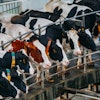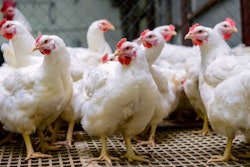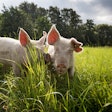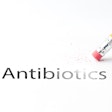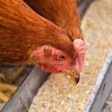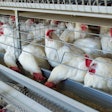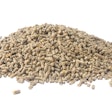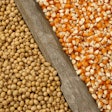
The use of animal effluents as fertilizers enriches soils with essential nutrients but also introduces trace minerals due to their composition. Given the increasing reliance on animal effluents in agriculture, and its importance for the circular economy, understanding and managing the ecotoxicological risks of trace minerals is essential for a sustainable ecosystem and healthy soils.
Trace mineral concentration in soil
Trace minerals, or trace elements in soil science, are defined as mineral elements naturally and ubiquitously occurring at trace levels in soils, i.e. lower than 100 mg/kg. The average concentration of each trace element in soils varies. When soils are naturally enriched, this is usually not an environmental issue because soil living organisms are adapted to these high concentrations.
Animal effluents used as fertilizers
Animal effluents are commonly used in agriculture as fertilizers. The concentration range of trace minerals found in animal effluents is very wide and is usually (much) higher than the natural soil concentration. For example, copper median concentration in soil is around 10 mg/kg and zinc median concentration in soil is around 80 mg/kg, but in effluent it reaches one to several hundred mg per kg. This leads trace minerals to accumulate in soils with repetitive applications of animal effluents. Among trace minerals, zinc, then copper, are by far the two most added to agricultural soils (Figure 1). In addition, animal effluents are the main source of zinc and copper inputs to agricultural soils, representing 80% and 50% for zinc and copper, respectively.
trace-element-contamination-sources
Headline: Figure 1. Trace element contamination contribution sources
Figure 1 displays the annual contribution of the six contamination sources to the average total amount of trace elements on French soils.
Source: Adapted from Belon et al. 2012 Sci. Tot. Environ. 439 87–95
Toxicity and ecotoxicity calculation models
Most of the trace elements added from animal effluents are bound to soil compounds, such as minerals and organic matter. They can be captured by plants or organisms living in the soil, leached to deeper soil layers, or dispersed toward groundwaters and watercourses.
Life cycle assessment (LCA) is one of the most widely used methodologies for assessing the ecotoxicity impact of trace minerals to soil health. The ecotoxic impact is calculated for each element as the multiplication of the concentration added to the soil by a factor named the comparative toxicity potential (CTP). The CTP differs according to the physico-chemical properties of the soil, such as the organic matter content and pH. Using this methodology for monitoring the impact of trace minerals added to European soil by animal effluents, it was estimated that zinc, then copper, would have the most important ecotoxic impact, primarily on soil and fresh water because these two trace elements are the most present in animal effluents.
The protective effect of animal effluent applications to soils
Beyond the input of trace minerals, the repetitive applications of animal effluents for a decade also tend to increase the dissolved organic matter concentration and pH in soils (Figure 2).
zinc-contamination-levels-in-fertilizer-animal-effluents-soil
Headline: Figure 2. Zinc contamination level, pH and solution Zn availability in soil with fertiziler or animal effluents
Figure 2 compares zinc (Zn) contamination level (a), pH (b) and solution Zn availability (c) in a soil receiving either mineral fertilizers (blue bars) or animal effluents (orange bars)
Source: Adapted from Laurent et al. 2020. Sci. Tot. Environ. 709, 135927
The changes in soil properties were able to decrease copper and zinc availability in amended soils. Consequently, soil organisms such as plants and earthworms do not accumulate more copper and zinc in soils receiving animal effluents or mineral fertilizers. Accordingly, despite animal effluents contaminating soils with copper and zinc, they also exert a protective effect that alleviates copper and zinc ecotoxicity. Whether this protective effect remains effective beyond a decade of animal effluent application is still a matter of debate, and other consequences of continuing to accumulate trace elements and altering the physical-chemical properties of soils may arise in the future that we are not yet aware of.
Conclusion
To sum up, the ecotoxicity of trace minerals added by animal effluents to soils is not defined only by the total concentration of trace minerals in soils. The bioavailability of trace minerals to soil living organisms also matters and is under the notable influence of the effect of animal effluents on changes in soil properties.
Accordingly, several levers can be used concomitantly to minimize the ecotoxicological impacts of trace minerals in animal effluents. First, to reduce the concentration of trace minerals in effluents, it is necessary to adapt their supplemented level in animal feed, moving to a precision mineral nutrition. Second, it should be accounted for the ability of animal effluents to change soil properties so as to maintain trace mineral availability in soils under ecotoxicological thresholds.
This article is based on Dr. Matthieu Bravin’s presentation, “Trace minerals added to agricultural soils by animal effluents: an ecotoxicological issue?”, made at the Animine Academy, held on September 2, 2023, in Lyon, France. Bravin would like to acknowledge Samuel Legros, Emma Clément, Marie Tella, Angel Avadí, and Emmanuel Doelsch for their collaborative support.
